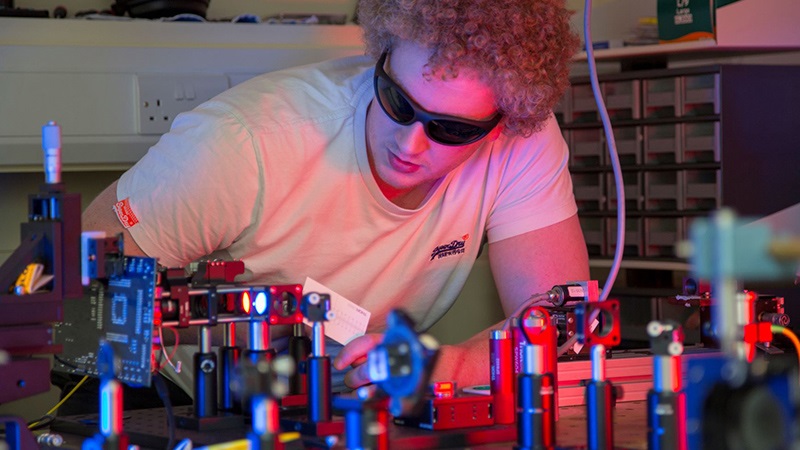19 Sep 2018
The future of global quantum communications could take a giant leap forward with the novel ‘satellite to ground receiver’ technology currently in development at Heriot-Watt University.
The receivers, which use photonic technology[1], will be designed to be compact, lightweight and affordable to allow for commercialisation and widespread use. These technologies have the potential to open up the use of encrypted quantum communication in space.
Optical quantum key distribution or QKD is now a mature quantum communication protocol. It describes the process of sharing encrypted information between two parties and addresses many issues of data vulnerability such as hacking or eavesdropping by using quantum properties of qubits.[2]
It is of particular relevance for companies and organisations sending sensitive data, including high value financial and government communications.
However, current QKD systems are earth-based and limited in range to less than a few 100kms, unless specialist fibres, expensive detectors and often lab-based settings are used. This can make it inefficient, expensive and impractical to implement.
QKD via low-Earth orbit satellites provides a more realistic option but while tests have been carried out in China and Japan, these have used expensive satellites and large telescopes, meaning there are still significant challenges to delivering a practical widespread network with global application.
While there have been major developments in QKD in space, the ground element has been relatively less explored.
Dr Ross Donaldson from the Institute of Photonics and Quantum Sciences has been awarded a Royal Academy of Engineering Fellowship to lead the development and feasibility testing for next generation ground receiver technology, in collaboration with companies looking to commercialise QKD.
He explains: “Current ground receivers cost in the region of a million pounds, are specially built and generally need staff to run them. However, we are developing ground receiver technology with the aim of significantly reducing that cost. It will be fully autonomous so that its commercially viable and has widespread applications.
“Having an increase in ground network coverage will benefit the Scottish economy, enabling us to push for increased coverage in space with micro and nanosatellites. This will have a positive economic effect for local nanosatellite suppliers such as Clyde Space. The growth in the ground and space network will also push scientific experiments towards connecting quantum computers and developing a quantum internet.”
Dr Donaldson is funded through a RAEng Research Fellowship from The Royal Academy of Engineering and an additional grant from ESPRC. Heriot-Watt University is collaborating with the EPSRC Quantum Communications Hub, Arqit, BT, ID Quantique, the Knowledge Scientific and Technology Facilities, the University of Edinburgh, the University of Strathclyde, and the Scottish Centre of Excellence in Satellite Applications.
[1] Photonics is the science and technology of generating, controlling, and detecting photons, which are particles of light.
[2] A qubit or quantum bit is the counterpart in quantum computing to the binary digit or bit in classical computing. A bit is the basic unit of information in a classical computer while a qubit is the basic unit of information in a quantum computer.















